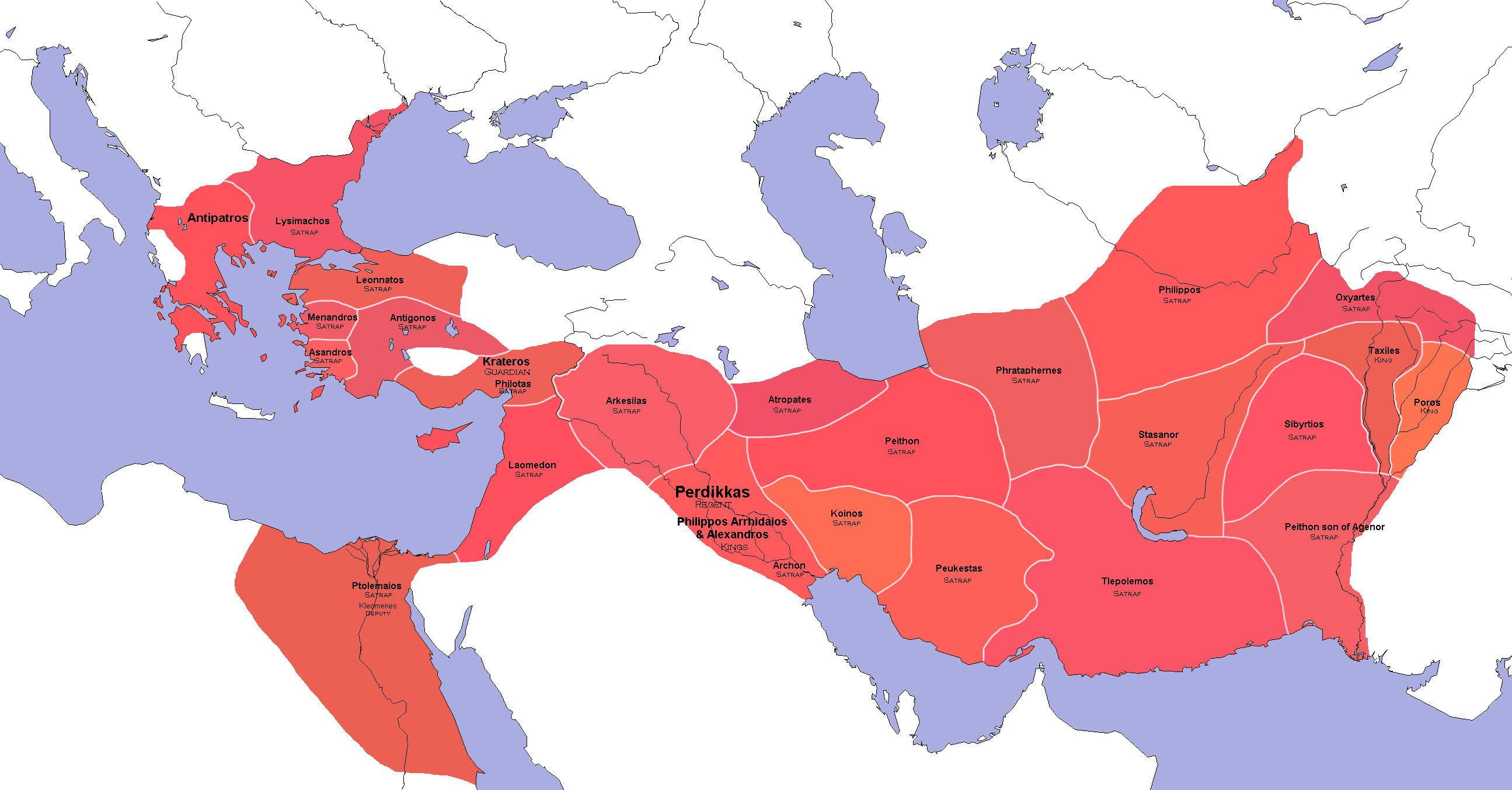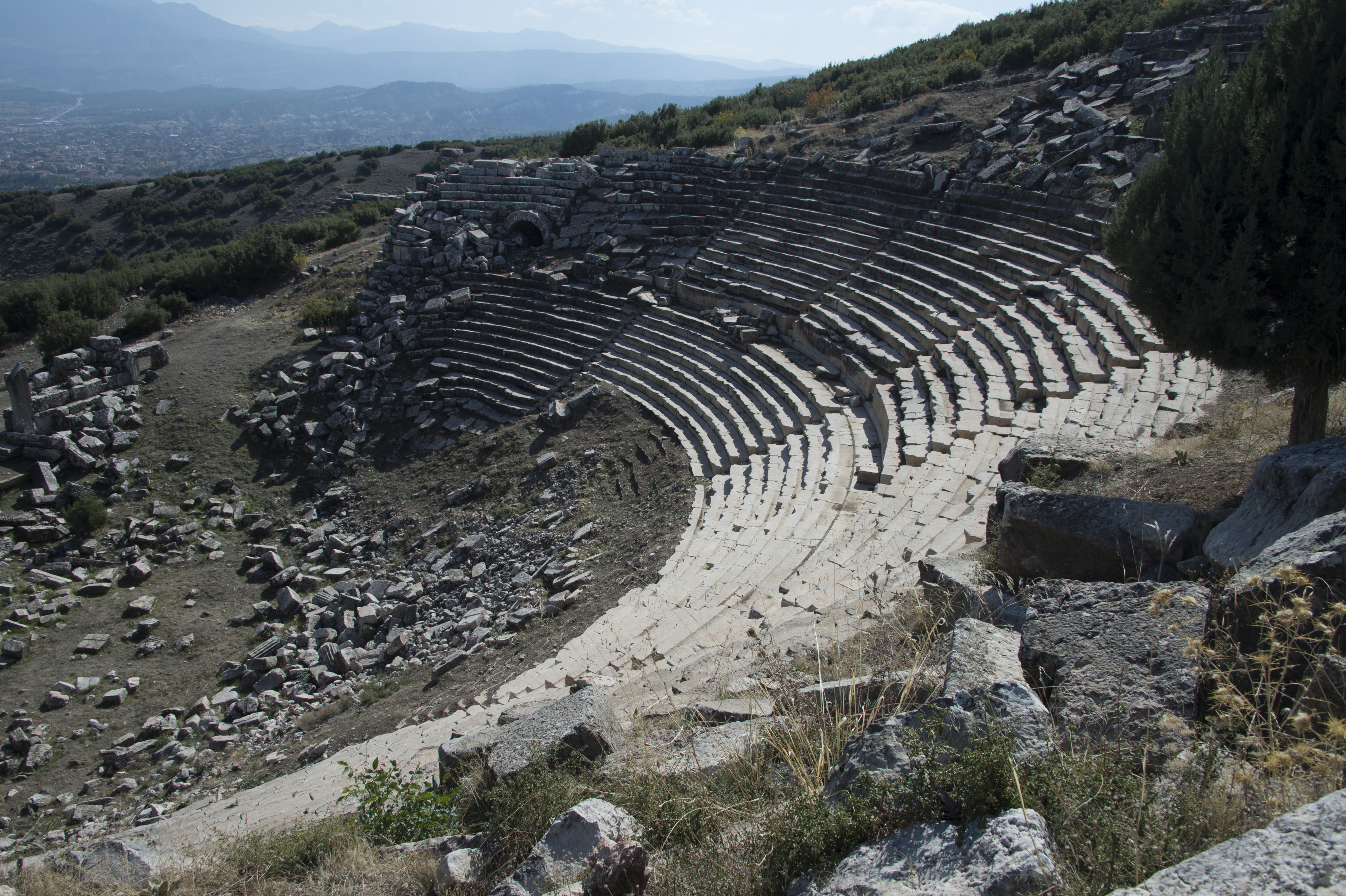|
Oenoanda
Oenoanda or Oinoanda ( Hittite: 𒃾𒅀𒉌𒌓𒉿𒀭𒁕 ''Wiyanawanda'', el, τὰ Οἰνόανδα) was a Lycian city, in the upper valley of the River Xanthus. It is noted for the philosophical inscription by the Epicurean, Diogenes of Oenoanda. The ruins of the city lie on a high isolated site west of the modern village İncealiler in the Fethiye district of Muğla Province, Turkey, which partly overlies the ancient site. The place name suggests that it was known for viticulture. History The early history of the settlement is obscure, in spite of an exploratory survey carried out, with permission of the Turkish authorities, by the British Institute at Ankara (BIAA) in 1974–76. The city was known as Wiyanawanda by the Hittites. It means "rich in vines/wine" or "land of the wine". During the Bronze Age it was a part of the Lukka lands which corresponds to Lycia from classical antiquity. It seems that Oenoanda became a colony of Termessos about 200-190 BC a ... [...More Info...] [...Related Items...] OR: [Wikipedia] [Google] [Baidu] |
Diogenes Of Oenoanda
Diogenes of Oenoanda ( grc-gre, Διογένης ὁ Οἰνοανδεύς) was an Epicurean Greek from the 2nd century AD who carved a summary of the philosophy of Epicurus onto a portico wall in the ancient Greek city of Oenoanda in Lycia (modern day southwest Turkey). The surviving fragments of the wall, originally extended about 80 meters, form an important source of Epicurean philosophy. The inscription, written in Greek, sets out Epicurus' teachings on physics, epistemology, and ethics. It was originally about 25,000 words long and filled 260 square meters of wall space. Less than a third of it has been recovered. Life Nothing is known about the life of Diogenes apart from the limited information he reveals to us. The inscription itself, which had been dated to the late 2nd century, has now been assigned on epigraphic grounds to the Hadrianic period, 117–138AD. Diogenes was wealthy enough to acquire a large tract of land in the city of Oenoanda to construct (or possibl ... [...More Info...] [...Related Items...] OR: [Wikipedia] [Google] [Baidu] |
Epicurean
Epicureanism is a system of philosophy founded around 307 BC based upon the teachings of the ancient Greek philosopher Epicurus. Epicureanism was originally a challenge to Platonism. Later its main opponent became Stoicism. Few writings by Epicurus have survived. However, there are independent attestations of his ideas from his later disciples. Some scholars consider the epic poem '' De rerum natura'' (Latin for ''On the Nature of Things'') by Lucretius to present in one unified work the core arguments and theories of Epicureanism. Many of the scrolls unearthed at the Villa of the Papyri at Herculaneum are Epicurean texts. At least some are thought to have belonged to the Epicurean philosopher Philodemus. Epicurus also had a wealthy 2nd-century AD disciple, Diogenes of Oenoanda, who had a portico wall inscribed with tenets of the philosophy erected in Oenoanda, Lycia (present day Turkey). Epicurus was an atomic materialist, following in the steps of Democritus. His ma ... [...More Info...] [...Related Items...] OR: [Wikipedia] [Google] [Baidu] |
Epicurus
Epicurus (; grc-gre, Ἐπίκουρος ; 341–270 BC) was an ancient Greek philosopher and sage who founded Epicureanism, a highly influential school of philosophy. He was born on the Greek island of Samos to Athenian parents. Influenced by Democritus, Aristippus, Pyrrho, and possibly the Cynics, he turned against the Platonism of his day and established his own school, known as "the Garden", in Athens. Epicurus and his followers were known for eating simple meals and discussing a wide range of philosophical subjects. He openly allowed women and slaves to join the school as a matter of policy. Of the over 300 works said to have been written by Epicurus about various subjects, the vast majority have been destroyed. Only three letters written by him—the letters to '' Menoeceus'', ''Pythocles'', and ''Herodotus''—and two collections of quotes—the ''Principal Doctrines'' and the ''Vatican Sayings''—have survived intact, along with a few fragments of his other writin ... [...More Info...] [...Related Items...] OR: [Wikipedia] [Google] [Baidu] |
Lycia
Lycia ( Lycian: 𐊗𐊕𐊐𐊎𐊆𐊖 ''Trm̃mis''; el, Λυκία, ; tr, Likya) was a state or nationality that flourished in Anatolia from 15–14th centuries BC (as Lukka) to 546 BC. It bordered the Mediterranean Sea in what is today the provinces of Antalya and Muğla in Turkey as well some inland parts of Burdur Province. The state was known to history from the Late Bronze Age records of ancient Egypt and the Hittite Empire. Lycia was populated by speakers of the Luwian language group. Written records began to be inscribed in stone in the Lycian language (a later form of Luwian) after Lycia's involuntary incorporation into the Achaemenid Empire in the Iron Age. At that time (546 BC) the Luwian speakers were decimated, and Lycia received an influx of Persian speakers. Ancient sources seem to indicate that an older name of the region was Alope ( grc, Ἀλόπη}, ). The many cities in Lycia were wealthy as shown by their elaborate architecture starting at l ... [...More Info...] [...Related Items...] OR: [Wikipedia] [Google] [Baidu] |
Kibyra
Cibyra or Kibyra (Greek: ), also referred to as Cibyra Magna, was an Ancient Greek city near the modern town of Gölhisar, in Burdur Province. It lay outside the north-western limits of the ancient province of Lycia and was the chief city of an independent state known as Cibyratis. Location The site is identified by its inscriptions. The Cibyratic plain is about 300 m above sea level. Cibyratis comprised the highest part of the basin of the Xanthus (river), and all the upper and probably the middle part of the basin of the Indus river, for Strabo describes Cibyratis as reaching the Rhodian Peraea. Mount Cragus ( Babadağ) at 6500 feet bounded it on the west and separated it from Caria. Pliny's brief description states that the river Indus, which rises in the hills of the Cibyratae, has sixty perennial contributories. History The city is mentioned by ancient literary sources. According to Strabo, the Cibyratae ( grc, Κιβυρᾶται) were said to be descendants of ... [...More Info...] [...Related Items...] OR: [Wikipedia] [Google] [Baidu] |
Hittite Language
Hittite (natively / "the language of Neša", or ''nešumnili'' / "the language of the people of Neša"), also known as Nesite (''Nešite'' / Neshite, Nessite), is an extinct Indo-European language that was spoken by the Hittites, a people of Bronze Age Anatolia who created an empire centred on Hattusa, as well as parts of the northern Levant and Upper Mesopotamia. The language, now long extinct, is attested in cuneiform, in records dating from the 17th ( Anitta text) to the 13th centuries BCE, with isolated Hittite loanwords and numerous personal names appearing in an Old Assyrian context from as early as the 20th century BCE, making it the earliest-attested use of the Indo-European languages. By the Late Bronze Age, Hittite had started losing ground to its close relative Luwian. It appears that in the 13th century BCE, Luwian was the most widely spoken language in the Hittite capital, Hattusa. After the collapse of the Hittite New Kingdom during the more general L ... [...More Info...] [...Related Items...] OR: [Wikipedia] [Google] [Baidu] |
Balbura
''Balbura'' is a genus of moths in the subfamily Arctiinae. Species * ''Balbura dorsisigna'' Walker 1854 * ''Balbura fasciata'' * ''Balbura fresini'' * ''Balbura intervenata ''Balbura intervenata'' is a moth of the subfamily Arctiinae. It is found in Panama, Costa Rica and Honduras Honduras, officially the Republic of Honduras, is a country in Central America. The republic of Honduras is bordered to the west ...'' ReferencesNatural History Museum Lepidoptera generic names catalog Lithosiini Moth genera {{Lithosiini-stub ... [...More Info...] [...Related Items...] OR: [Wikipedia] [Google] [Baidu] |
Lucius Licinius Murena (praetor 88 BC)
Lucius Licinius Murena was a Roman soldier and politician. He was notable for playing an important role in the Roman victory against the forces of Mithridates VI of Pontus at the Battle of Chaeronea in 86 BC during the First Mithridatic War and for engaging in another war, the Second Mithridatic War (83–81 BC), against Mithridates in Asia Minor without the authorisation of the Roman senate. Life Murena was a praetor probably in 88 BC. was a lieutenant of Lucius Cornelius Sulla during the First Mithridatic War (89–85 BC) with Mithridates VI of Pontus. He participated in the Battle of Chaeronea of 86 BC. Sulla encamped near Chaeronea, close to the camp of Archelaus, the commander of the enemy. He left Murena behind with one legion and two cohorts to face the enemy, should they prepare for battle, and went to Chaeronea, where the Romans had a garrison. Some of the townsfolk offered to go and cut off the enemy at nearby Thurium. Sulla agreed, returned to his camp and pre ... [...More Info...] [...Related Items...] OR: [Wikipedia] [Google] [Baidu] |
Strabo
Strabo''Strabo'' (meaning "squinty", as in strabismus) was a term employed by the Romans for anyone whose eyes were distorted or deformed. The father of Pompey was called " Pompeius Strabo". A native of Sicily so clear-sighted that he could see things at great distance as if they were nearby was also called "Strabo". (; el, Στράβων ''Strábōn''; 64 or 63 BC 24 AD) was a Greek geographer, philosopher, and historian who lived in Asia Minor during the transitional period of the Roman Republic into the Roman Empire. Life Strabo was born to an affluent family from Amaseia in Pontus (in present-day Turkey) in around 64BC. His family had been involved in politics since at least the reign of Mithridates V. Strabo was related to Dorylaeus on his mother's side. Several other family members, including his paternal grandfather had served Mithridates VI during the Mithridatic Wars. As the war drew to a close, Strabo's grandfather had turned several Pontic ... [...More Info...] [...Related Items...] OR: [Wikipedia] [Google] [Baidu] |
Stoa
A stoa (; plural, stoas,"stoa", ''Oxford English Dictionary'', 2nd Ed., 1989 stoai, or stoae ), in ancient Greek architecture, is a covered walkway or portico, commonly for public use. Early stoas were open at the entrance with columns, usually of the Doric order, lining the side of the building; they created a safe, enveloping, protective atmosphere. Later examples were built as two stories, and incorporated inner colonnades usually in the Ionic style, where shops or sometimes offices were located. These buildings were open to the public; merchants could sell their goods, artists could display their artwork, and religious gatherings could take place. Stoas usually surrounded the marketplaces or agora of large cities and were used as a framing device. Other examples were designed to create safe, protective atmospheres which combined useful inside and outside space. The name of the Stoic school of philosophy derives from "stoa". Famous stoas * Stoa Poikile, "Painted Porch" ... [...More Info...] [...Related Items...] OR: [Wikipedia] [Google] [Baidu] |
Portico
A portico is a porch leading to the entrance of a building, or extended as a colonnade, with a roof structure over a walkway, supported by columns or enclosed by walls. This idea was widely used in ancient Greece and has influenced many cultures, including most Western cultures. Some noteworthy examples of porticos are the East Portico of the United States Capitol, the portico adorning the Pantheon in Rome and the portico of University College London. Porticos are sometimes topped with pediments. Palladio was a pioneer of using temple-fronts for secular buildings. In the UK, the temple-front applied to The Vyne, Hampshire, was the first portico applied to an English country house. A pronaos ( or ) is the inner area of the portico of a Greek or Roman temple, situated between the portico's colonnade or walls and the entrance to the '' cella'', or shrine. Roman temples commonly had an open pronaos, usually with only columns and no walls, and the pronaos could be as lon ... [...More Info...] [...Related Items...] OR: [Wikipedia] [Google] [Baidu] |



.jpg)



